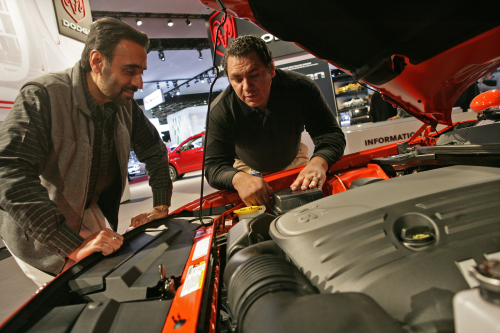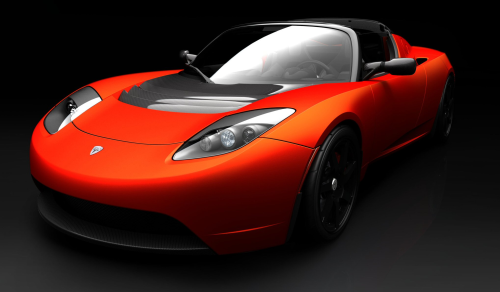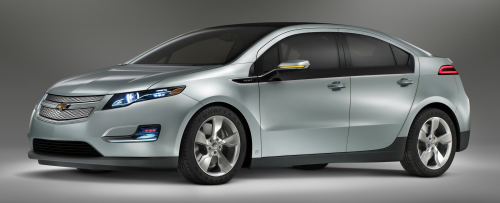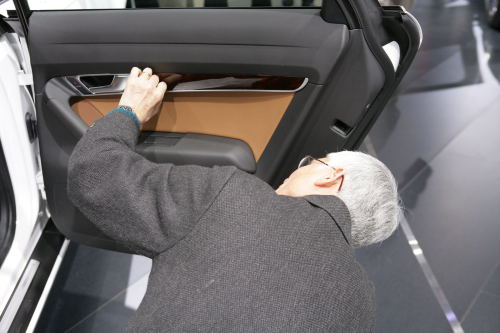




The average price of regular unleaded petrol in the US hit US$4.114 cents a gallon in July 2008. By January it had fallen to $1.85, according to the American Automobile Association. European petrol prices averaged 133.5c per litre for unleaded in July, then down to 94.6c in January, the AARoadwatch reports. The sudden surge in petroleum pricing, however, has drivers still nervous about the potential for future fluctuations. As a result, their next vehicle purchase is expected to reflect a stronger demand for better fuel economy.
Of course, the world’s car and truck makers have more immediate problems – survival. The global economic downturn has produced bankruptcies, layoffs, plant closings and lower production numbers. In 2008, new vehicle car and light truck sales in the US dropped 18% from 2007 levels, reports Autodata Corp. In Europe, 2008 was the worst year for auto sales in 15 years, with Spain recording the steepest fall (-28.1%), according to the European Automobile Manufacturers Association. In the UK, sales were down 11.3%.
Not so bad for composites
The dour news bodes better for plastics and composites, however, because the benefits that these materials offer in the face of an upward trend in metal prices, are exactly what the automotive industry needs. These benefits include reduced mass for improved fuel economy, and the ability to consolidate multiple parts into a single component for cost savings over metal-stamped assemblies.
The fuel-cost scare was good news for the development of hybrid and electric vehicles, which were in abundance at the 2009 North American International Auto Show in Detroit in January. General Motors (GM) led off its product parade at the show with a prototype of the extended range electric Chevy Volt, slated for introduction in the US late next year. The Volt uses 100 lbs (45.4 kg) of thermoplastics, including composites in the hood and doors, plus unreinforced polymeric materials in the rear deck lid, roof and fenders.
GM estimates that compared to similar sized petrol-powered vehicles, the Volt will save motorists up to 1892 litres of fuel annually. That is based on research showing that 75% of commuters in the US travel an average daily distance of less than 40 miles (64 km), the range of the car’s battery before recharging is required.
Among the plastics used in the Volt is a hybrid thermoplastic composite grade IXIS® 157, a continuous glass fibre reinforced sandwich composite for lightweight horizontal body panels from AZDEL and SABIC Innovative Plastics. The IXIS composite is composed of a random glass fibre reinforced core (50% glass by weight) together with 0°/90° skins of continuous unidirectional fibre reinforced thermoplastic. The skin material enables a Class A finish and dimensional stability, while the core material aids processing and reduces overall material costs, relates AZDEL.
The company has developed another grade, IXIS 200, which is intended for online painting and processing through the e-coat process.
Super-fast sports cars
Also making a splash at the Detroit auto show was the two-seat, all-electric Tesla Roadster Sport from California-based Tesla Motors. The company has begun taking orders for the sports car, which features a high power-to-weight ratio thanks to a skin of lightweight carbon fibre/epoxy composite which, as the manufacturer tells it, took two years of design, prototyping, test, redesign, retest, meetings and arguments to develop.
Tesla utilises carbon fibre mat in the resin transfer moulding (RTM) process to produce composite components for the car. Body panels are a sandwich made of two layers of carbon separated by core of glass and polypropylene. The sandwich panels are encapsulated in epoxy resin. The car, which reportedly can go 0 to 60 mph in a blazing 3.7 seconds, starts at $128 500 in the US and 112 000 Euros (excluding VAT) in Europe.
British automaker Lotus, which helped Tesla Motors develop its vehicles, is expected to launch an extended-range electric car of its own in the near future. Lotus recently debuted its first all-new model since the Elise was introduced in 1995. The new Evora sports car employs a mostly aluminium chassis along with a composite roof that serves as a stressed structural component and stressed composite body panels that add to the car’s high stiffness.
300 kg weight reduction?
Engineering polymers specialist Ticona estimates that by using plastics instead of metal, medium-size passengers cars will be able to shed an average of 50 kg in the near term. In the medium term, the average 900 kg of steel and other metals in cars today can be reduced by up to 300 kg through the use of composites and hybrid solutions, Ticona believes. Weight savings can add up quickly when lightweight components are consistently implemented. Volkswagen uses Ticona’s long-fibre-reinforced thermoplastic (LFRT) Celstran®+, for example, for the dashboard of the Golf Plus. The resulting elimination of metal and processing steps yields a weight reduction of about 8 kg as well as lower production costs, relates Ticona.
Speciality thermoplastics compounder RTP Company recently announced the commercialisation of a polypropylene LFRT concentrate designed to meet demanding automotive specifications. The melt impregnated concentrate combines 60% by weight very long glass fibre reinforcement and masterbatch additives into a single pellet, allowing processors to easily blend it with neat polypropylene resin at the press. The concentrate can be used to increase stiffness, impact resistance, and long-term endurance of polyolefin materials when diluted to long glass fibre levels of 20-40% in finished goods. Masterbatch additives are included to achieve superior dispersion, allowing the concentrate to be blended with materials of varying melt flows.
Well suited for high-impact and structural parts, LFRT composites are among the fastest growing materials in the plastics industry today, according to business researchers at Lucintel. Compared to metals, LFRTs have higher strength-to-weight ratios and impact resistance, offer greater design flexibility, and provide better resistance to chemicals and corrosion. Although the materials have been around for several decades, technological advances and increased acceptance in the automotive market have been the primary driving forces for their rapid growth, Lucintel observes in its ‘Worldwide LFRT Competitive Analysis and Leadership Study 2008’ (September 2008).
LFRTs compete with a range of materials, including short-fibre-reinforced plastics, glass mat thermoplastics (GMT), sheet moulding compound/bulk moulding compound (SMC/BMC) and metals. Lucintel researchers relate that SMC is being challenged in automotive applications by GMT, which has shorter moulding cycle times, longer shelf life, and it exhibits better impact resistance at both high and low temperatures. Lucintel expects advanced GMT to be adopted by the automotive industry for exterior panels in the near future. Ford Motor Company has indicated that weight reduction is a key part of its strategy to improve fuel economy by 40% by the year 2020. The company’s goal is to reduce vehicle weight as much as 750 lbs (340 kg), depending on the model, without compromising safety. To achieve the goal, one path that Ford scientists are taking to achieve the goal is nanotechnology – developing paints, plastics, light metals and catalysts. The challenge is to separate and disperse nanoparticles into existing materials in a way that makes products lighter, more durable and more fuel efficient, the company says. The feeling at Ford is that nanotechnology holds great promise in automotive applications.
Composites for hybrids
Innovative examples of automotive applications were seen in January at the American Composites Manufacturers Association (ACMA) Composites+Polycon 2009 show. The ACMA is the umbrella organisation of the Automotive Composites Alliance (ACA), which promotes the use of thermoset composites in the automotive industry. Several members of the ACA discussed trends and innovations with Reinforced Plastics during the show, agreeing that composites and hybrid vehicles are a good fit.
Referring to an ACA benchmark study, ‘Composites Make Sense for Hybrids,’ John Busel, Director of ACMA’s Composites Growth Initiative, talked about benefits in mass reduction, low-cost tooling and part quality. ACA research shows that using structural low-density composites in a one-piece moulding in trunk compartments, for example, can reduce mass up to 50%. In one assembly, composites replace up to eight metal stampings at a savings of up to 70% in tooling investment, the ACA reports. A trunk component for the 2009 Pontiac Solstice Coupe, compression moulded of SMC formulated with nano technology, won the ACE Award for Process Innovation at the Tampa show .
Jeff Robbins, Director, Research & Development at Tier One supplier Meridian Automotive Systems, discussed new automobile front-end carriers made out of a thermoplastic which is compounded at the press, where continuous glass roving in introduced.
“We compression mould the material and get significantly better properties than an injection moulded version,” he says. “Our minimum glass length is much longer than can be used in injection moulding.”
The carrier has passed front-end crash testing with flying colours, he adds.
Meridian is working with a resin company on a ‘green’ formulation, which is comprised of 30% recycled and renewable materials, Robbins notes. A vehicle underbody shield with complex geometries was produced with the material. The recycled component comes from soda bottles and the rest is renewable with soy-based systems and some solid soy fibres, he related. But not all automakers are open to components made with green materials: “We find that some OEMs are counting every penny and others are willing to pay a little bit more for green.”
Steve Martin, Communications Director with resin manufacturer AOC, related that his company continues working with recyclable and non-petroleum-based materials.
“We have some resins that are essentially a drop-in replacement for petroleum-based products which offer equivalent or better properties for processing as well as outstanding mechanical and structural properties,” he says. “We’re very excited about it, but our customers, the moulders, have yet to find a home for the products.”
“We’re doing a lot of joint work with Tier One companies to find suitable applications,” he notes.
AOC also continues to research value-added qualities such as colour, which can help OEMs save money by eliminating the need to paint.
Martin relates that thermoplastics are gaining ground in vehicle applications while thermoset composites are holding a constant level.
“The two types offer different benefits and the opportunities for both are increasing,” he says.
Martin believes that polymeric materials will steadily expand in automotive applications as the next generation of engineers come into the system: “They are looking at a broader spectrum of materials without being predisposed to traditional directions.”
At the Tampa show, a paper entitled ‘The Thermoset Resin Industry – A New Business Model’ by Dwight Rust of the National Composite Center, Dayton, Ohio, USA, reported that in 2007, the US transportation market consumed an estimated 325 million lbs (147.4 million kg) of SMC/BMC materials. If used to their full potential, that amount should be 12 times the current market size, Rust maintains. The competitive environment requires that innovation continues in the SMC/BMC industry to drive down costs, improve quality and decrease weight. In addition, the industry needs an easy way for those not experienced in composites to design with these materials.
To address these needs, research is needed to develop new, lighter weight, higher strength and more environmentally friendly SMC/BMC materials, says Rust, noting that lower cost and better controlled manufacturing methods are also needed. He believes that a friendlier avenue to designing with SMC/BMC composites would facilitate the rapid commercialisation of such new composite materials via a fully integrated database repository and a virtual design and rapid prototyping operation. The paper concludes with an admonition that collaboration in the SMC/BMC industry is absolutely critical for success in the highly competitive global automotive industry.
Controlling SMC moisture
At Composites+Polycon 2009, the award for the Best Technical Paper went to Hamid Kia, Lab Group Manager of the GM R&D Center, for his paper on Development of Low Moisture Absorbing SMC. It discussed the ‘paint popping’ that occurs on powder-coated SMC panels in the bake oven – a problem that threatens the use of SMC in exterior applications at GM. Research shows that popping increases as moisture content in SMC goes up. Material properties and process characteristics that can eliminate these surface defects were evaluated in the paper.
Kia related that after various fillers typically used to produce SMC were exposed to high humidity and evaluated, it was concluded that talc exhibits the lowest moisture absorption and calcium carbonate, the most common filler for SMC, was found to be the second lowest. It was shown that eliminating magnesium oxide as a thickening agent in SMC can extensively reduce moisture absorption. The paper evaluates additives, fillers, reinforcements and compounding steps for SMC and discusses the development of two low moisture absorbing SMC formulations suitable for cosmetic-grade Class A SMC.





